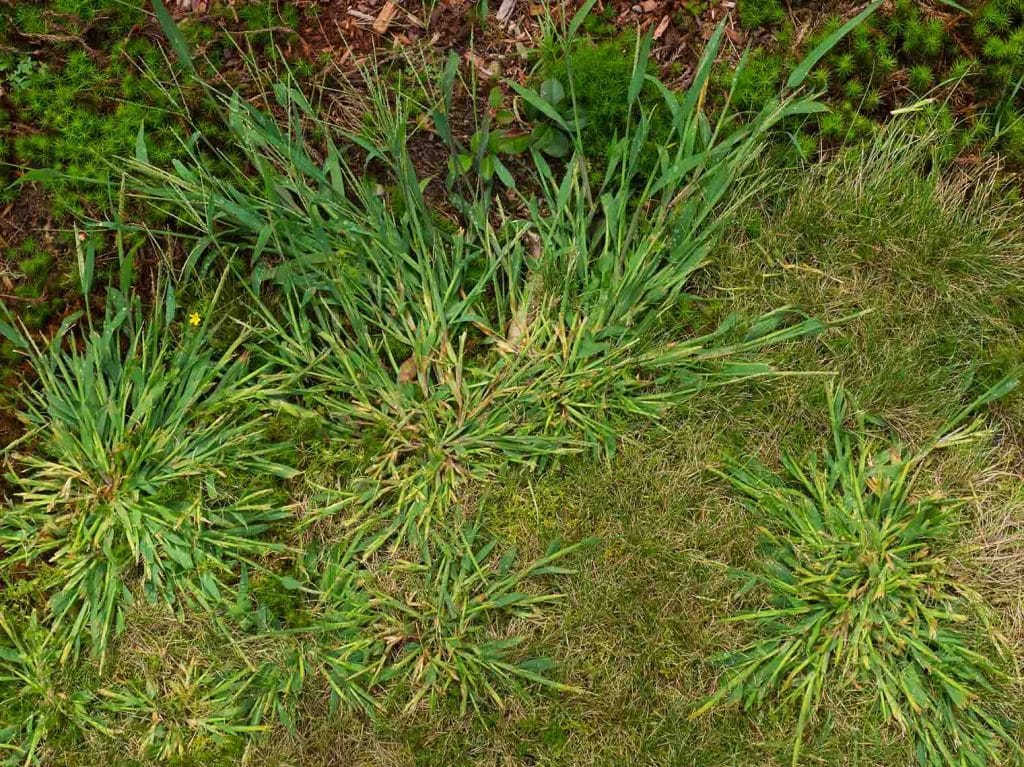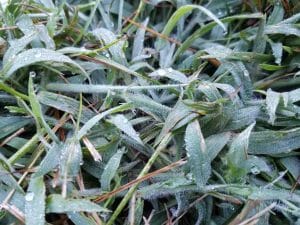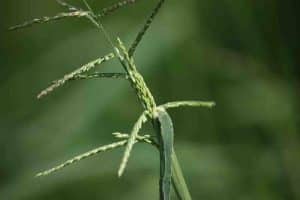The fight for completely flawless grass is consistent, particularly as the weather conditions get hotter in the spring. Crabgrass, a typical disturbance yearly verdant weed, is known to flourish during this time. As it spreads across your lawn in clumps and patches, this sneaky invasive weed outcompetes healthy turfgrass for nutrients and minerals due to its shallow roots and rapid growth rate. The best way to fight this annoying weed is to learn about it.
The Most Common Types Of Crabgrass

Crabgrass is one of the most common weeds because it can survive. This solid weed can grow and flourish in ignored garden beds and, surprisingly, in walkway breaks. There are no less than 35 kinds of crabgrass on the planet. The most prevalent crabgrass varieties in North America are large and smooth crabgrass. By familiarizing yourself with the different types of crabgrass, it will be easier to spot the infestation and stop it before it takes over your lawn completely.
Smooth/Short Crabgrass

Smooth crabgrass is a low-developing summer yearly with shallow roots and short leaves. It spreads from its seeds and hubs, forcefully crawling its direction across your yard. The young crabgrass leaves blend almost perfectly with healthy turfgrass as it matures.
It has no auricles and has leaves that are rolled in the bud. It has purple-tinged compressed sheaths that make it unique.
Large Crabgrass

Large crabgrass, like smooth crabgrass, is a low-growing summer annual that spreads throughout a region via seeds and nodes. When not cut, the surrenders can develop to 2 feet in length. Its blossoms are organized in varieties of 2 to 15 spike-like groups. Substitute leaves on enormous crabgrass can gauge 2 to 10 inches long and develop about ⅔ of an inch wide.
The light green leaves of a seedling are covered in tiny hairs. The hairs cover the endless leaf sheath as it develops. Enormous crabgrass flourishes in earth and sandy soil, but at the same time, is tracked down in yards, side of the road, breaks in the walkway, and, surprisingly, squander regions.
Southern Crabgrass

This annual grassy weed is most prevalent on coastal plains and in the Southern United States. Except for its prominent midvein, its growth pattern is comparable to that of smooth and large crabgrass. The leaf sheath of this plant has the same kind of long hairs as the leaf sheath of large crabgrass, but its leaf blades rarely have hair.
Long, thin, flat blades characterize Southern Crabgrass, which can reach a height of three feet. It is often planted intentionally, as it's utilized for domesticated animals’ brushing.
Tropical Crabgrass

Tropical crabgrass, another summer annual grassy weed, is mostly found in warmer southern states. This problematic lawn weed, also known as Asian crabgrass, produces seeds from midsummer until the first frost. The seeds go into dormancy over the winter, germinate in the middle of the spring, and grow from summer to winter.
The leaves of tropical crabgrass can reach the same length as those of large and southern crabgrass, and the seed head branches all join at the same point on the stem.
Life Cycle Of Crabgrass

In the early stages, the seedlings of the majority of crabgrass species blend seamlessly with healthy turfgrass. Crabgrass develops the distinct characteristics that distinguish it from healthy turfgrass as it matures.
This noxious weed spreads via seedlings and nodes, allowing additional clumps to emerge throughout an area at various stages.
Crabgrass has particular leaves and stems at its developed stage, filling in clusters and outcompeting solid turfgrass. They expand throughout the summer and well into the fall before vanishing for the winter.
Controlling & Managing Crabgrass

Fortunately, crabgrass can be controlled with the right herbicides and proper care for your lawn. It is best to consult a professional in order to obtain the appropriate herbicide that will eradicate the crabgrass without harming healthy turfgrass. The best way to control crabgrass is to use a combination of methods. By following these tips, you can keep your lawn looking its best and free of crabgrass.
- Pre-emergent herbicides: These herbicides are applied to the soil before crabgrass seeds germinate, preventing them from growing. Pre-emergent herbicides should be applied in the early spring, when soil temperatures are between 55 and 65 degrees Fahrenheit.
- Post-emergent herbicides: These herbicides are applied to the leaves of crabgrass plants after they have germinated. Post-emergent herbicides can be effective, but they are less effective than pre-emergent herbicides.
- Hand pulling: Crabgrass can also be controlled by hand pulling. This is a time-consuming method, but it is effective for small areas of crabgrass.
- Aeration: Aerating the soil helps to improve drainage and airflow, which can make it more difficult for crabgrass to grow.
- Fertilization: Fertilizing your lawn with a balanced fertilizer can help to keep it healthy and vigorous, which can make it more competitive with crabgrass.
- Watering: Watering your lawn deeply and infrequently can help to prevent crabgrass from growing.
Prevention is the best method of control with any nuisance weeds. Here are some tips to keep your lawn free of pesky weeds and looking its best.
- Inspect your lawn regularly for crabgrass and remove it as soon as you see it. The longer you wait, the more difficult it will be to control.
- Keep your lawn healthy and well-maintained. A healthy lawn is more resistant to weeds.
- Avoid overwatering your lawn. Crabgrass thrives in moist soil.
- Remove any debris from your lawn, such as leaves and branches. This will provide a less hospitable environment for crabgrass seeds to germinate.
- If you have a lot of crabgrass, you should consider hiring a professional lawn care company to help you control it.
